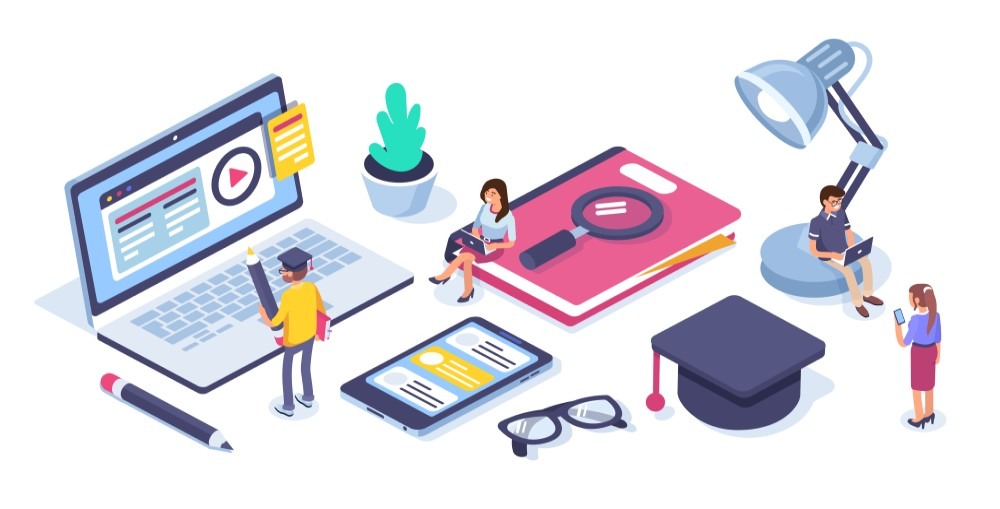One of the early influencers on my understanding of teaching in the digital age was, fellow Australian, Allan Carrington. His work in the university sector had led him to clearly consider the characteristics that he wanted his students to graduate with. What could he do to directly influence and enhance the characteristics in his students that would make them more employable and more productive members of society.
After formalising his understanding of the concept of ‘graduate capabilities’ Allan created the Padagogy Wheel. It was through the Padagogy Wheel that I came to meet Allan. I happened to be teaching in one of the first four schools in Sydney trialing 1:1 iPads in my systems very first BYOD program. My co-teachers and I we looking for established pedagogical models that married quality teaching and technology. That is when we found the Padagogy Wheel. Allan was also kind enough to join us in several skype sessions. Through these conversations a genuine friendship between Allan and I was forged. Allan and his Padagogy Wheel have impacted on my understanding ed-tech pedagogy and I am proud to pay tribute to his work and his impact on me by referencing the Padagogy Wheel several times in this book.
But how did Allan come to understand the concept of graduate capabilities?
As and academic, Allan traveled to various universities and it was while he was at the University of Western Sydney (UWS) that he hear Professor Geoff Scott. Professor Scott was the Director of Sustainability. His work focused on not environmental sustainability but sustainability in Higher Education.
Professor Scott described Educational Sustainability as having four pillars that of Social, Cultural, Economic and Environmental. These pillars support the key functions of a university which interact with the four functions of a university, research, teaching, engagement and operations.
“Students graduate into a transdisciplinary world not a monodisciplinary one; a world of continuous flux, where technical and human factors constantly interact in complex and unique ways. It is a world where unpredictability and change are always in the air and our graduates’ capability is most tested when the unexpected happens, an unanticipated opportunity arises, when things suddenly go awry or they are faced with a ‘wicked problem’ or dilemma (Rittel & Webber, M, 1973) – a ‘forked road’ situation in which there is a range of potentially relevant ways to go and they have to decide which is likely to be the most productive. “
Transforming graduate capabilities & achievement standards for a sustainable future Key insights from a 2014-16 Office for Learning & Teaching National Senior Teaching Fellowship – Geoff Scott
Clearly the focus of Professor Scott’s work is not simply how to help a student obtain a qualification from a given institution, but more importantly how to help prepare that student as best as possible for the workforce so that they can succeed at work and be a positive contributor to society.
Based on his work and international studies Professor Scott has named the top 15 capabilities that are required to work in a vast range of industries, including elite sport.
- Having energy, passion and enthusiasm
- Being willing to give credit to others
- Empathising & working productively with diversity
- Being transparent and honest in dealings with others
- Thinking laterally and creatively
- Being true to one’s values and ethics
- Listening to different points of view before coming to a decision
- Understanding personal strengths & limitations
- Time management skills
- Persevering
- Learning from errors
- Learning from experience
- Remaining calm when under pressure
- Being able to make effective presentations to different groups
- Identifying from a mass of information the core issue/opportunity
Allan Carrington took these capabilities and built an ed-tech friendly pedagogical model that has these capabilities at its core. Despite the fact that these capabilities, and the Padagogy Wheel itself, were originally designed for Higher Education the implications for younger students are clear. As educators we all follow the universal truth that we want to best prepare our students for the world and we want them to be a positive influence in the world.
With this in mind I think that we as educators are challenged to ask three questions:
How can I design activities and assessments to develop these capabilities in the graduates/students?
How can I enrich and strengthen learning opportunities and expose students to real or virtual challenges where they can hone these capabilities?
How can I help my students develop these capabilities? What strategies or learning environment would work?

Brett Salakas

Latest posts by Brett Salakas (see all)
- The META of Greta - July 3, 2020
- WHAT DO WE WANT OUR STUDENTS TO BE LIKE WHEN THEY GRADUATE FROM OUR CLASS? - February 5, 2019
- Gods, Gadgets and Greatness – Lessons from ISTE 2018 - January 30, 2019
You must be logged in to post a comment.


There are no comments
Add yours